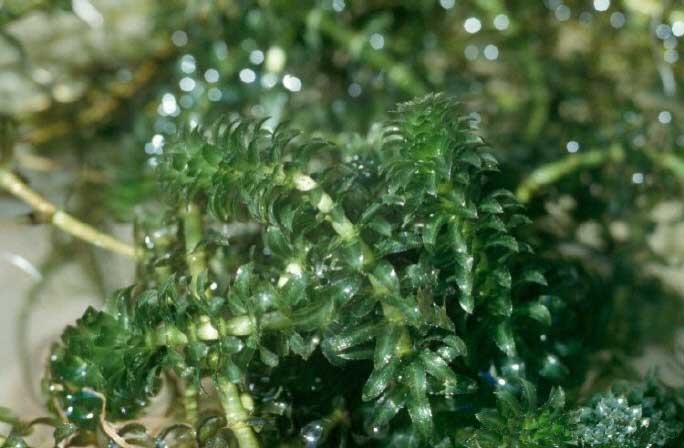- Hydrilla
image_width = 240px
image_caption = "Hydrilla verticillata"
regnum =Plant ae
divisio = Magnet
classis =Liliopsida
ordo =Alismatales
familia =Hydrocharitaceae
genus = "Hydrilla"
genus_authority = Rich.
species = "H. verticillata"
binomial = "Hydrilla verticillata"
binomial_authority = (L.f.) Royle"Hydrilla" (Esthwaite Waterweed or Hydrilla) is an
aquatic plant genus, usually treated as containing just one species, "Hydrilla verticillata", though some botanists divide it into several species. Synonyms include "H. asiatica", "H. japonica", "H. lithuanica", and "H. ovalifolica". It is native to the cool and warm waters of theOld World inAsia ,Europe ,Africa andAustralia , with a sparse, scattered distribution; in Europe, it is reported fromIreland ,Great Britain ,Germany , and theBaltic States , and in Australia fromNorthern Territory ,Queensland , andNew South Wales .Flora Europaea: [http://rbg-web2.rbge.org.uk/cgi-bin/nph-readbtree.pl/feout?FAMILY_XREF=&GENUS_XREF=Hydrilla&SPECIES_XREF=&TAXON_NAME_XREF=&RANK= "Hydrilla"] ] Flora of Taiwan: [http://tai2.ntu.edu.tw/udth/bin/fot1.exe/browse?bid=5&page=15 "Hydrilla"] ] Australian Plant Name Index: [http://www.anbg.gov.au/cgi-bin/apni?taxon_name=Hydrilla%25 "Hydrilla"] ]It has off-white to yellowish
rhizome s growing in sediments at the water bottom at up to 2 m depth. The stems grow up to 1–2 m long. The leaves are arranged in whorls of two to eight around the stem, each leaf 5–20 mm long and 0.7–2 mm broad, with serrations or small spines along the leaf margins; the leaf midrib is often reddish when fresh. It is monoecious (sometimes dioecious), with male and femaleflower s produced separately on a single plant; the flowers are small, with three sepals and three petals, the petals 3–5 mm long, transparent with red streaks. It reproduces primarily vegetatively by fragmentation and by rhizomes and turions (overwintering buds), and flowers are rarely seen.Flora of NW Europe: [http://ip30.eti.uva.nl/BIS/flora.php?selected=beschrijving&menuentry=soorten&id=4171 "Hydrilla verticillata"] ] Blamey, M. & Grey-Wilson, C. (1989). "Flora of Britain and Northern Europe". ISBN 0-340-40170-2] Huxley, A., ed. (1992). "New RHS Dictionary of Gardening". Macmillan ISBN 0-333-47494-5.]Hydrilla has a high resistance to
salinity (>9-10ppt) compared to many other freshwater associated aquatic plants.The name Esthwaite Waterweed derives from its occurrence in
Esthwaite Water in northwesternEngland , the only English site where it is native, but now presumed extinct, having not been seen since 1941.Environmental Change Network: [http://www.ecn.ac.uk/sites/ecnsites.asp?site=L05 Esthwaite Water] ] "Hydrilla" closely resembles some other related aquatic plants, including "Egeria" and "Elodea ".tatus as an invasive plant
"Hydrilla" is naturalised and invasive in the
United States following release in the 1960s from aquariums into waterways inFlorida . It is now established in the southeast fromConnecticut toTexas , and also inCalifornia .Flora of North America: [http://www.efloras.org/florataxon.aspx?flora_id=1&taxon_id=200024721 "Hydrilla verticillata"] ] By the 1990s control and management were costing millions of dollars each year."Hydrilla" can be controlled by the application of aquatic
herbicide s and it is also eaten bygrass carp , itself an invasive species in North America. Insects used asbiological pest control for this plant include weevils of genus "Bagous " and the Asian hydrilla leaf-mining fly ("Hydrellia pakistanae"). Tubers pose a problem to control as they can lay dormant for a number of years. This has made it even more difficult to remove from waterways and estuaries.References
Wikimedia Foundation. 2010.

